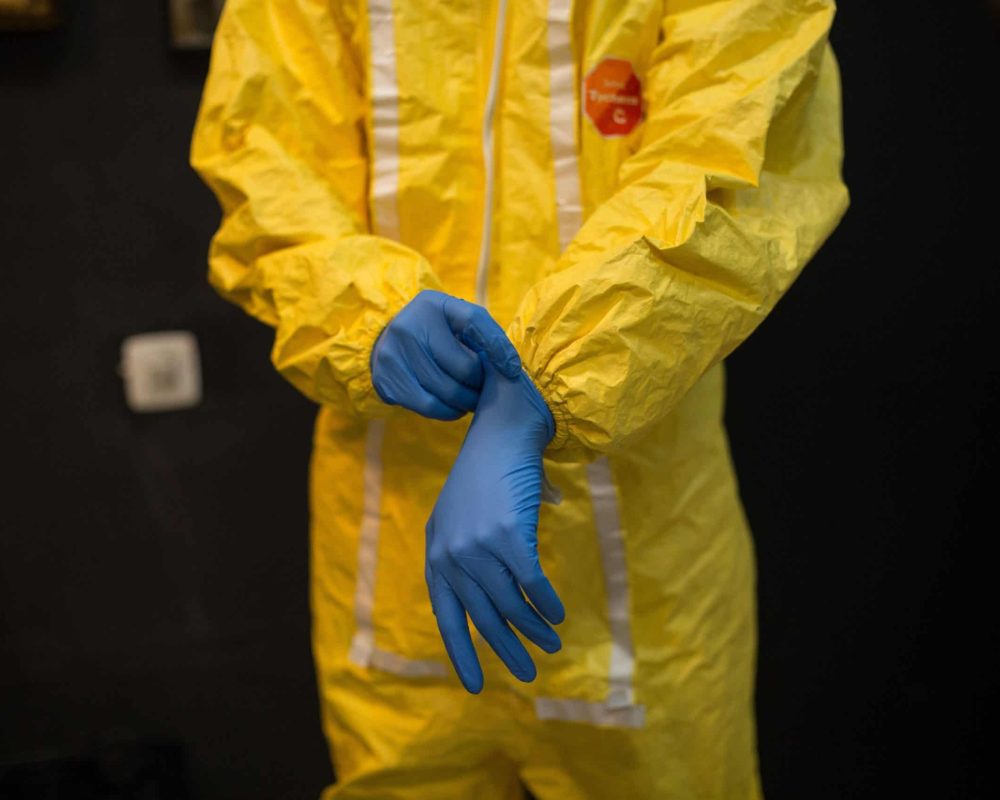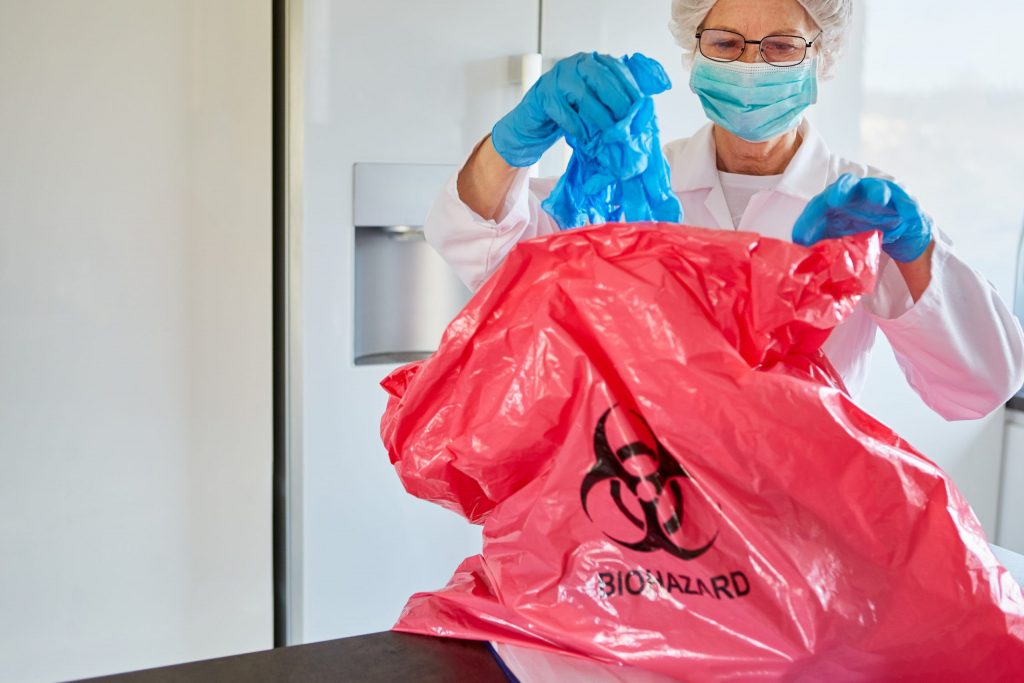Clandestine Lab Cleanup: Comprehensive Purification for Hazardous Sites
Clandestine Lab Cleanup: Comprehensive Purification for Hazardous Sites
Blog Article
Expert Biohazard Cleansing and Purification for Blood, Bodily Fluids, and Hazardous Products
In the realm of biohazard cleansing and purification for blood, physical liquids, and harmful materials, precision and competence are paramount. The potential health threats related to direct exposure to biohazards highlight the crucial requirement for precise handling and extensive cleanup. Specialized training outfits professionals with the understanding and abilities needed to address these unsafe scenarios properly. Nevertheless, it is not merely about cleaning up; the importance of using appropriate purification methods can not be overstated. As we navigate the detailed landscape of biohazard cleaning, comprehending the nuances of laws, compliance, and the specific tools at play becomes important in ensuring a secure and complete decontamination process.
Wellness Dangers of Biohazard Exposure
Exposure to biohazards poses significant wellness threats that can cause severe repercussions for neighborhoods and people alike. Biohazards encompass a large range of biological compounds, consisting of blood, physical liquids, mold and mildew, microorganisms, infections, and various other possibly contagious materials. When individuals come into call with these biohazards, whether via crashes, incorrect handling, or environmental exposure, they encounter the risk of having serious diseases or conditions.
Among the main wellness dangers related to biohazard exposure is the transmission of infectious conditions. Bloodborne pathogens such as HIV, hepatitis B and C, and different bacteria can be present in biohazardous materials, positioning a direct danger to human health. Breathing in air-borne biohazards like mold and mildew spores or entering call with infected surfaces can additionally result in respiratory issues, allergic reactions, and various other unfavorable wellness impacts.
Furthermore, biohazard direct exposure can have long-term health and wellness effects, with some illness manifesting years after the first get in touch with (Blood Cleanup). Consequently, it is vital to prioritize appropriate biohazard cleansing and purification to minimize these health risks and guarantee the safety of people and communities

Specialized Training for Biohazard Cleanup
When it concerns handling biohazard clean-up effectively and safely, specialized training plays an essential function in making certain correct purification procedures are followed. Biohazard clean-up needs certain knowledge and skills to successfully mitigate threats related to bloodborne microorganisms, physical fluids, and harmful materials. Specialists educated in biohazard cleanup undergo strenuous instruction on just how to securely take care of, get rid of, and dispose of biohazardous materials to stop contamination and direct exposure.
Specialized training for biohazard cleanup covers a variety of essential subjects, consisting of correct personal protective devices (PPE) use, bloodborne virus awareness, decontamination techniques, and contaminated materials disposal protocols. People educated in biohazard clean-up are geared up with the needed proficiency to evaluate contamination levels, identify prospective risks, and execute proper clean-up treatments in compliance with regulatory criteria.
Constant training and education are paramount in the field of biohazard clean-up to remain upgraded on the current purification technologies, safety and security protocols, and laws. By spending in specialized training, biohazard cleaning specialists can efficiently reply to emergency situation cleaning situations and protect both public wellness and the setting.
Importance of Appropriate Purification Strategies
Utilizing appropriate decontamination methods is essential in biohazard cleaning to successfully get rid of unsafe materials and minimize wellness threats. Reliable purification not only makes sure the removal of noticeable traces of blood, bodily liquids, and other biohazards but additionally targets unnoticeable pathogens that may pose significant wellness dangers otherwise properly gotten rid of. By complying with rigid purification procedures, trained experts can considerably lower the risk of exposure to dangerous microbes, infections, and microorganisms that can lead to diseases or infections.
Correct purification techniques entail the usage of specialized tools and anti-bacterials that are specifically made to reduce the effects of biohazards properly. Thorough cleansing and disinfection of polluted locations are important to protect against the spread of virus and guarantee a secure environment for owners. Additionally, the correct disposal of biohazardous waste adhering to decontamination treatments is important in stopping contamination of various other surfaces or individuals.

Tools and Tools for Safe Cleaning
When dealing with blood, bodily liquids, or hazardous products, biohazard cleansing professionals rely click over here now on specialized equipment to reduce exposure dangers and extensively sanitize the damaged area. Furthermore, biohazard cleansing kits having anti-bacterials, absorptive materials, and biohazard bags are utilized to securely dispose and contain of contaminated things.
Advanced cleaning devices like hospital-grade anti-bacterials, HEPA-filtered vacuums, and fogging devices are used to disinfect surfaces and get rid of biohazards efficiently. Specialized tools such as sharps containers and biohazard waste disposal containers are used to safely handle sharp items and biohazardous waste products. By using the appropriate tools and devices, biohazard cleaning specialists can guarantee an extensive clean-up procedure that focuses on safety and minimizes wellness dangers for both workers and occupants of the damaged area.
Rules and Compliance in Biohazard Cleaning
Proper adherence to laws and compliance requirements is critical in biohazard cleansing to make sure the safety and security of both personnel and the environment. Federal government companies such as OSHA (Occupational Safety And Security and Health Administration) go now and the EPA (Environmental Defense Firm) have actually developed details standards for biohazard clean-up treatments to reduce wellness threats and ecological contamination. These guidelines cover a variety of elements including the handling, transportation, and disposal of biohazardous products, in addition to the required training and protective tools needed for workers involved in the cleanup procedure.
Biohazard cleansing companies must remain updated with these policies to assure that their procedures meet the called for security requirements. Failure to abide by these guidelines can lead to severe consequences, consisting of fines, lawsuit, and endangering the health and wellness of individuals and the setting. By complying with strict guidelines and conformity steps, biohazard cleansing business can effectively alleviate risks and make certain a risk-free and thorough clean-up process for all celebrations entailed.
Final Thought
Finally, biohazard cleansing and decontamination need specific training, appropriate methods, and adherence to guidelines. Direct exposure to blood, physical liquids, and harmful products postures substantial wellness threats, making it vital to utilize the ideal equipment and tools for risk-free cleanup. By following strict methods and standards, professionals can successfully minimize the dangers related to biohazard direct exposure and ensure the security of both themselves and others.
As we navigate the complex landscape of biohazard cleaning, understanding the nuances of policies, conformity, and the specific devices at play becomes important in making certain a complete and secure purification procedure. (Blood Cleanup)
When it comes to taking care of biohazard cleaning successfully and securely, specialized training plays a basic duty in ensuring proper decontamination procedures are followed.Making use of correct purification strategies is critical in biohazard cleaning to properly remove dangerous materials and minimize health and wellness dangers. Furthermore, biohazard cleaning kits having anti-bacterials, absorptive materials, and biohazard bags are used to securely dispose and contain of visit this web-site infected products.
Government agencies such as OSHA (Occupational Safety And Security and Health And Wellness Administration) and the EPA (Environmental Defense Firm) have established certain guidelines for biohazard cleaning treatments to reduce health threats and environmental contamination.
Report this page